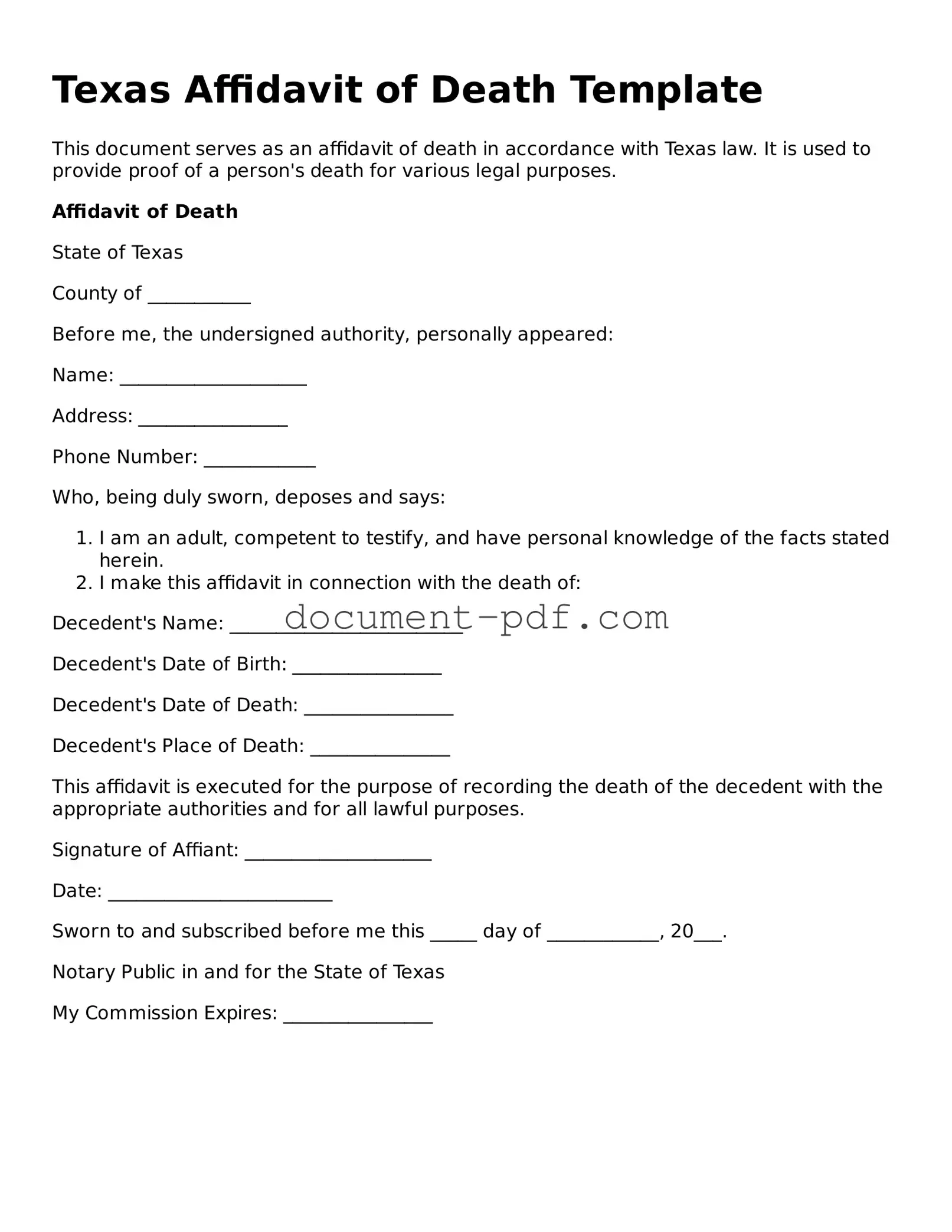Attorney-Verified Texas Affidavit of Death Template
The Texas Affidavit of Death form is a legal document used to officially declare the death of an individual, often necessary for settling estates or transferring property. This form provides a clear and formal record, which can help streamline various legal processes following a person's passing. Understanding how to complete this form is crucial for ensuring that all legal matters are handled appropriately.
To get started on filling out the Texas Affidavit of Death form, please click the button below.
Access Affidavit of Death Editor Here
